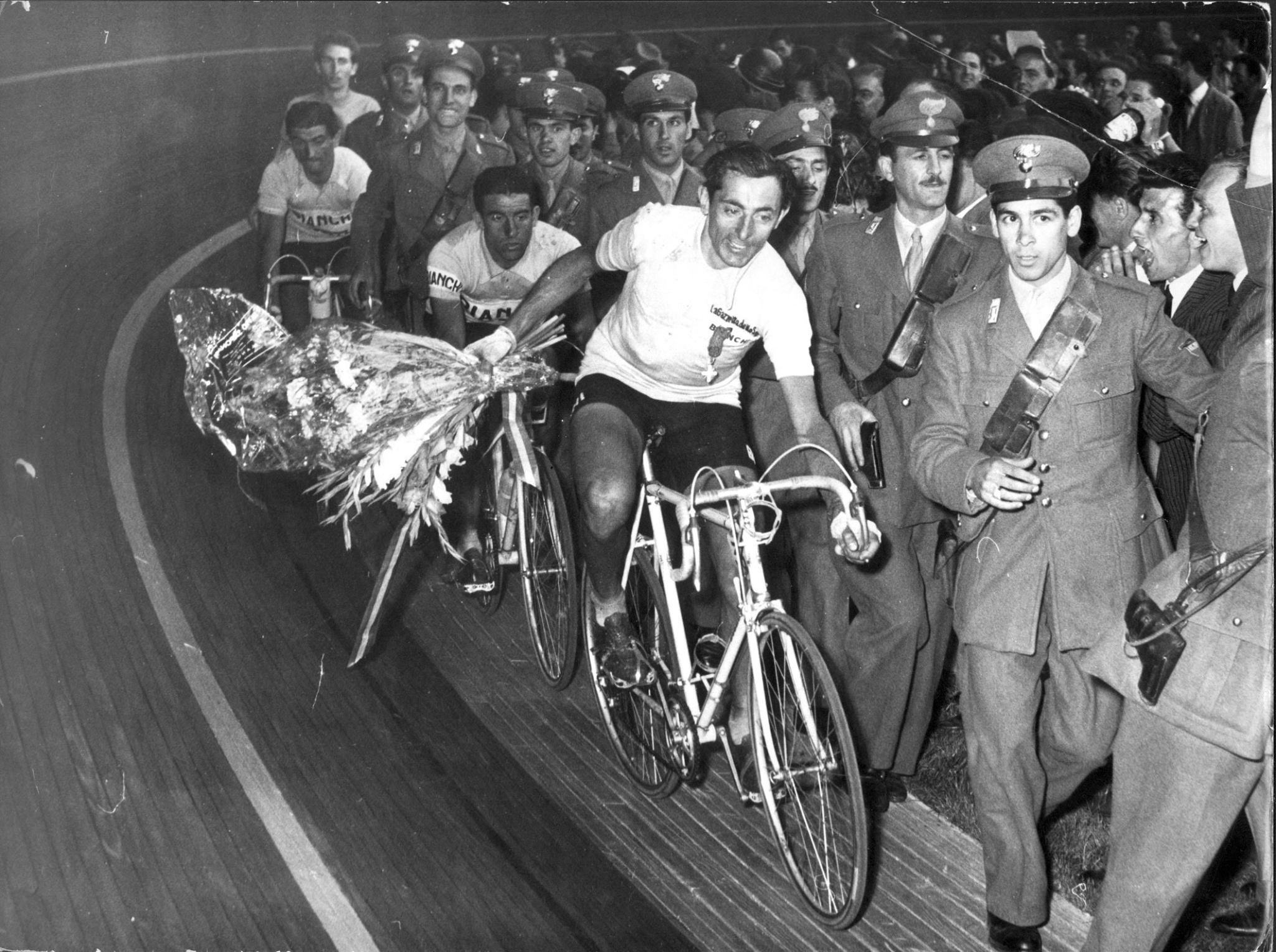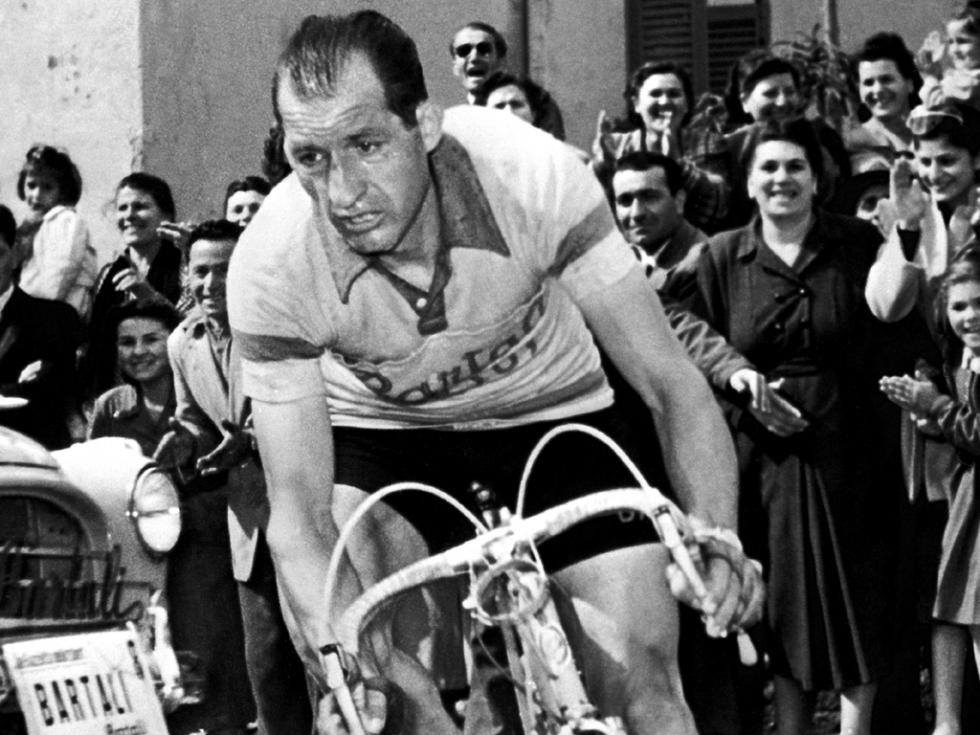Cycling Heroes Who Paved The Way
Cycling Heroes Who Paved The Way


My grandfather was born in a tiny village just a few kilometers away from where cycling legend Fausto Coppi was born (Castellania, Piedmont). So, I had the privilege of visiting the museum and Casa Coppi there on one of my very early trips to Italy. It was there that I learned about an era of legendary cyclists and about the great, historical race called the Giro d’Italia. This year, Italy celebrates the 100th edition of this grand race. Let’s take a closer look at how this whole thing got started.
Photo above: Fausto Coppi
Along with the Tour de France and Vuelta a España, the Giro makes up cycling’s prestigious three-week-long Grand Tours. The Giro is usually held during late May and early June. While the route changes each year, the format of the race stays the same, with the appearance of at least two time trials, and a passage through the mountains of the Alps, including the Dolomites. Like the other Grand Tours, the modern editions of the Giro d’Italia normally consist of 21-day-long segments called “stages” over a 23-day period that includes two rest days.
It all started on May 13,1909 at 2:53 a.m. when 127 riders pushed off for the first Giro d’Italia from Loreto Place in Milan. The race was split into eight stages covering 2,448 km (1,521 miles). A total of 49 riders finished, with Italian Luigi Ganna winning. Ganna won three individual stages and the General Classification. Ganna received 5,325 Lire as the winner’s prize, with the last rider in the general classification receiving 300 Lire.
The idea of the holding a bicycle race touring up and down the Italian peninsula was first suggested when the historic newspaper Sports editor Tulio Morgagni of La Gazzetta dello Sport sent a telegram to both the paper’s owner and cycling editor stating the need for an Italian tour. At the time, La Gazzetta’s rival, Corriere della Sera, was planning on holding a bicycle race of its own after the success they had gained from holding an automobile race. Morgagni then decided to try and hold their race before Corriere della Sera could hold theirs, but La Gazzetta lacked the money.
However, after the success La Gazzetta had with creating the Giro di Lombardia and Milan–San Remo, the owner Costamagna decided to go through with the idea. Their bike race was announced on August 7, 1908 in the first page of that day’s edition of La Gazzetta dello Sport. The race was to be held in May of 1909 and the idea of the race was inspired by the Tour de France and the success that L’Auto had gained from it.
In 1936 and 1937—when the Giro was not open to foreign participation due to Italy’s political position—the Tuscan rider Gino Bartali dominated the scene, taking the maglia rosa two years in a row. In the following years, due to some bad falls where Bartali was injured, Fausto Coppi—the young 20-year-old cyclist from Piedmont—stepped in and held the reigns, winning the race in 1940. This was the final year of the race before the long pause from 1940-1946 during World War II. In the latter part of the 1940s, Coppi went on to win five more Giro d’Italia.

Gino Bartali
The 1968 Giro d’Italia saw two important firsts: the first tests for drug use and the first prologue. The Belgian rider, Eddy Merckx, came on the scene and more foreign riders were introduced to the Giro. Eddy Merckx went on to win the Giro d’Italia a record five times in his career.
Consecutive years introduced phenomenal riders including Francesco Moser and Bernard Hinault.
Miguel Indurain was the first Spanish rider to win the Giro d’Italia in 1992.
Indurain first gained the lead of the race after the hilly third stage leading into (my nearby city!) Arezzo and then held it all the way to the finish in Milan. He separated himself from his competitors during the race’s two individual time trials, both of which he won. Indurain would go on to ride the Tour de France in July and win it, and in doing so, completed the coveted Giro-tour double victory.
In 1988 American rider Andrew Hampsten was the first non-European rider to win the Giro.
In the late 90s through 2007 with Marco Pantani, otherwise known as “Il Pirata” (the Pirate), there was a strong returning Italian conquest and unfortunately doping, EPO control became a big topic. This resulted in a shift away from the competitive aspects of cycling, including the deliberate and scientific use of doping and the employment of marketing strategies that sidelined athletic content, which began to corrode the sport.
The Giro d’Italia remains today one of the most important Italian sporting events, which continues to command international attention and a huge amount of pre-tour excitement every spring throughout Italy. Alè!
